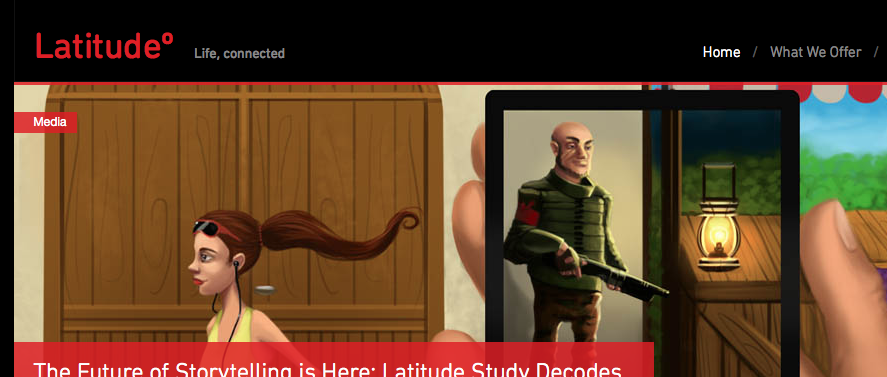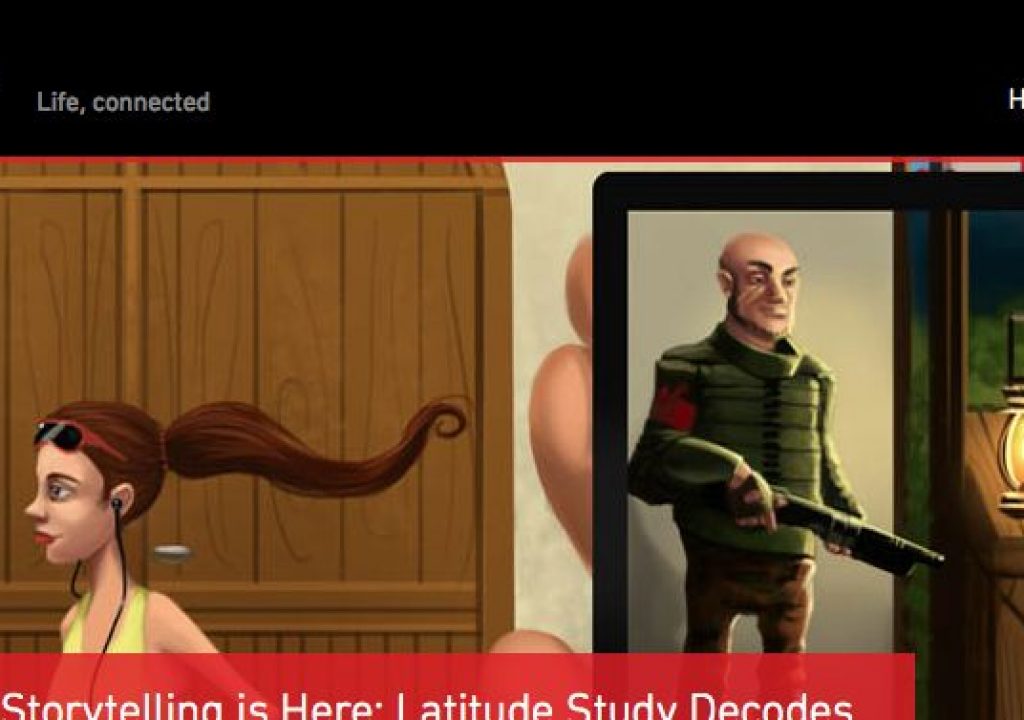
Storytelling is as old as mankind, but technology is expanding the possibilities for how stories are told; stories are becoming more interactive, more immersive, and spread across more platforms. A new innovation study by Latitude, The Future of Storytelling, identifies key audience targets and specific concepts for next-generation content experiences. The research encompasses all genres, including non-fiction and advertising, as well as many content formats including television shows, movies, books, and plot-driven video games.
“Technology is creating new opportunities to engage with narratives—but it’s not just about accessing more content in more places; it’s about the opportunity to bring stories out of the screen and into our lives,” says Neela Sakaria, EVP of Latitude. “We found audiences are more ready than ever to embrace new tech-driven possibilities for stories to impact us more deeply: allowing us to see new points of view, inspiring us to live better, and even changing the ways we think about brands.”
Latitude is a strategic insights consultancy working with the world’s foremost media, technology, and advertising companies to understand, measure, and generate new possibilities for cross-platform experiences. In 2012, Latitude kicked off the ongoing Future of Storytelling project with an online survey amongst 158 early adopters, which generated ideas for future narrative experiences.
Building on these earlier findings, a large-scale online survey was conducted amongst a broad audience: 1,107 smartphone owners, ages 15-59, in Brazil, the United Kingdom, and the United States.* Additionally, a segmentation analysis uncovered four audience archetypes based on motivations for engagement and desired future experiences: Seekers, Relaters, Realists, and Players. Latitude’s website, futureofstorytellingproject.com, allows anyone to discover his or her own archetype and explore the data interactively.
“People are enthusiastic about new storytelling possibilities, but there’s no ‘one-size-fits all approach,’” says Kim Gaskins, Director of Content Development at Latitude, who co-led the study. “When we compared people along dimensions that aren’t normally considered—like the desire for more active participation, more immersion, or more personal impact—it confirmed that new dimensions of experience, and new ways to measure them, will become even more important as stories extend across and beyond screens.”
Key insights for content creators and brands include :
Characters Can Become Our Friends
- 78% want to “friend” a character digitally (e.g., receive Facebook updates, text messages, etc.), with the ability to sway the character’s decisions—just as with a real friend.
Stories with a View
- 87% want to see events through the eyes of a particular character or to switch between different characters’ points-of-view.
Heed the Second (and Third) Screens
- 41% use a second screen at least daily while watching TV, which includes 50% of 18-34 year-olds and 35% of 35-59 year-olds.
- 67% say that using a second screen to interact with TV content would increase their overall TV viewing; this includes 63% of 35-59 year-olds.
- The most popular second screen interactions for TV shows tend to be goal-oriented, such as earning rewards (80% interested), voting to decide a show’s outcome (79%), or making a purchase (76%).
By Popular Demand: Innovative Advertising
- 92% agree there’s a real opportunity for brands to make ads feel more like a story or a game that they’d naturally choose to engage with.
Play with New Possibilities, Like Parallel Worlds
- As characters become more “real,” it’s natural that they should live full, 24/7 lives even when people aren’t actively tuning in. When significant events happen, fans might receive text messages from characters or push alerts from “official” news sources. In fact, 91% say narratives with a “real-time” story-world would motivate them to tune in more often to ensure they weren’t missing anything.
Stories Could Be One-Click Storefronts
- Brands have an opportunity to reach consumers through more seamless integrations with content they’re already hooked on; 73% are interested in discovering real-world products or services at relevant points in a story.
“Multi-Platform” Now Includes the Real World
- 94% feel companies should treat the “real world” (e.g., places, people, or objects) as another platform that can interact with content they view on other devices. This stands out as a particularly compelling opportunity for retailers with physical locations.
Download the study report and visit futureofstorytellingproject.com.
To continue exploring with Latitude:
Newsletter sign-up: http://latd.com/clients-us/#maillist.
Twitter: @latddotcom.
Facebook: http://facebook.com/latituderesearch.
Latitude is a full-service, international research consultancy. They help the world’s foremost media, technology and advertising companies better understand and engage their audiences across the following areas:
- Thought leadership & opportunity discovery.
- Brand, marketing & social media strategy.
- Content/programming strategy & testing.
- Digital & mobile usability & product development.
- Advertising effectiveness & optimization.
To learn more about Latitude’s custom research and consulting services, visit their website.
*Study findings are not intended to be representative of the general population. Participants were ages 15-59, living in Brazil, the United Kingdom, & the United States (n=1107). All were smartphone owners with basic cable and/or pay TV services (including streaming from the web) who watch at least 6 hours of TV content per week. At least 50% of participants from the UK & US were required to own a tablet.

